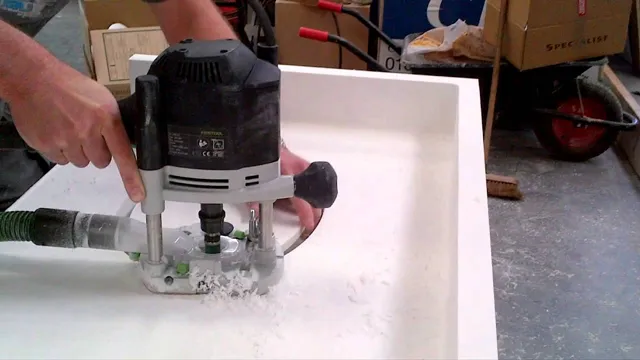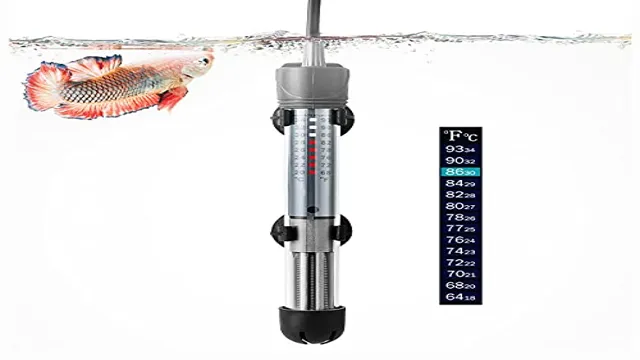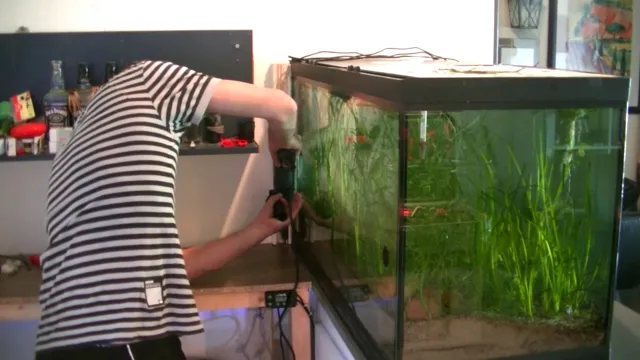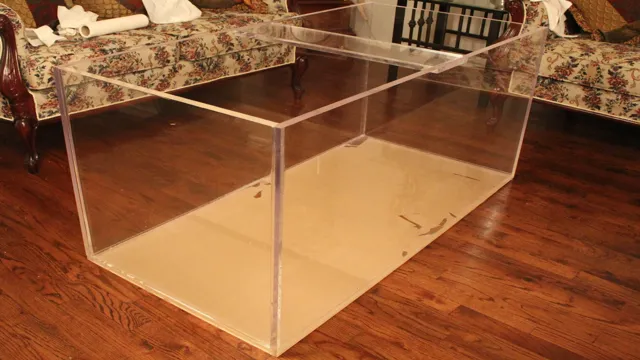How to Propagate Wisteria Aquarium: A Comprehensive Guide for Beginners
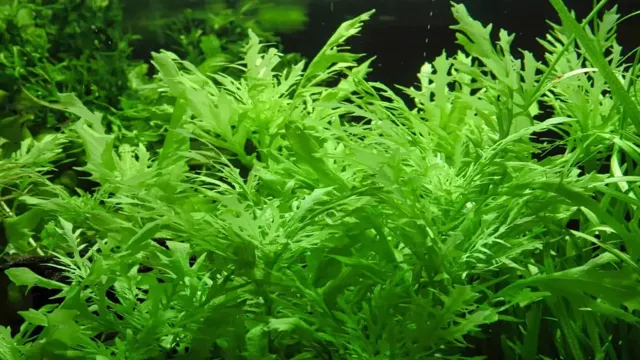
Have you ever seen a stunning aquarium display with a beautiful vine-like plant growing all around it? Chances are, that plant was wisteria. Wisteria is a popular choice for aquariums due to its beautiful appearance and easy care. However, wisteria isn’t just for show- it also has many benefits for an aquarium’s ecosystem.
It can help regulate the water’s pH and oxygen levels, as well as provide hiding spots for fish and other aquatic life. If you’re looking to add wisteria to your aquarium or propagate the plant, keep reading to learn how. In this article, we’ll cover everything you need to know, from planting and pruning to caring for your wisteria as it grows and thrives.
So, grab your gardening gloves and get ready to take your aquatic oasis to the next level with wisteria.
What is Wisteria Aquarium?
If you’re an aquarium enthusiast, you’ve probably heard of wisteria aquarium. Wisteria is a beautiful plant with vibrant green leaves that can be propagated in water. If you’re wondering how to propagate wisteria aquarium, it’s actually quite simple! First, you’ll need to trim a healthy stem from your wisteria plant.
Next, strip the leaves from the bottom half of the stem. Finally, place the stem in a jar of water, making sure that the remaining leaves are above the surface of the water. Over time, you’ll see roots grow from the stem and leaves sprout from the top.
Once the new leaves have grown a few inches, you can transfer the wisteria to your aquarium. Not only will it add a beautiful splash of green to your underwater landscape, but it will also oxygenate the water and provide a natural habitat for your fish. Plus, you’ll save money by propagating your wisteria rather than buying new plants!
Description of Wisteria Aquarium
Wisteria Aquarium is a stunning aquarium located in Tokyo, Japan that is renowned for its breathtaking exhibits and collections of marine life. This aquarium is home to over 30,000 marine creatures from 450 different species, including whale sharks, stingrays, sea turtles, and many more. The aquarium is divided into multiple themes that showcase the diversity of marine life, such as the “Ocean” exhibit that simulates the ocean floor and “Jellyfish Ramble” that features various species of jellyfish.
Visitors can also enjoy the “Kuroshio Tank,” which is one of the largest tanks in the world that holds 5,000 tons of water and houses various pelagic fish species. Wisteria Aquarium provides an incredible opportunity for visitors to experience the natural beauty of the ocean and learn about the importance of conservation efforts. So, if you find yourself in Tokyo, this aquarium is a must-visit destination that you won’t want to miss!
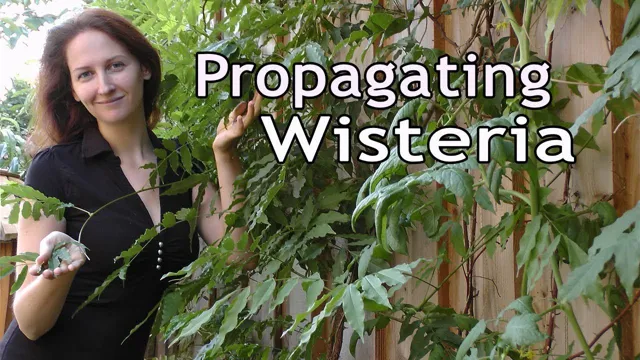
Choosing the Right Propagation Method
If you’re looking to propagate wisteria in your aquarium, there are a few different methods you can choose from. One option is to use stem cuttings, which involves taking a cutting of the plant and placing it in water until it grows roots. Another option is to use layering, where you bend a section of the plant’s stem and bury it in the substrate until it grows roots.
Finally, you could also try propagating wisteria through division, which involves separating the plant into smaller sections and replanting them. Ultimately, the best propagation method will depend on your specific setup and preferences. Regardless of which method you choose, it’s important to take proper care of your wisteria during the propagation process to ensure successful growth.
Provide your wisteria with adequate light, nutrients, and carbon dioxide, and be patient as you wait for new growth to emerge. With the right care and attention, you can successfully propagate wisteria in your aquarium and enjoy its beautiful, cascading foliage.
Seeds Propagation
When it comes to propagating seeds, choosing the right method can make all the difference in a successful and abundant harvest. There are several propagation methods to choose from, including seed sowing, stem cutting, layering, division, and grafting. The best method for you depends on the type of plant, its growth habit, and your skill level.
Seed sowing is a simple and inexpensive way to propagate annuals, biennials, and some perennials. Stem cutting is a common method for propagating herbs, succulents, and woody ornamentals. Layering works well for shrubs and climbers, and division is ideal for perennials.
Grafting is a more advanced technique used to combine the qualities of two different plants. Before selecting a propagation method, consider the plant’s natural habitat and genetic makeup, as well as your own preferences and experience. Choose the right method, and your garden will thank you with colorful blooms and delicious harvests.
Cutting Propagation
When it comes to propagating plants, there are various methods you can use. One of the most popular and effective methods is cutting propagation. This involves taking a part of the plant, such as a stem or a leaf, and growing it into a whole new plant.
However, choosing the right method for cutting propagation depends on the type of plant you’re working with. Softwood cuttings are taken from new growth and root quickly, while hardwood cuttings are taken from older growth and can take longer to root. Meanwhile, some plants require a special hormone treatment to stimulate growth, while others can be propagated simply by placing the cutting in water.
Understanding the needs of your specific plant will help you choose the best method for cutting propagation. So, whether you’re propagating herbs, flowers, or succulents, take the time to research the best approach to ensure a successful outcome.
Division Propagation
Division Propagation When it comes to choosing the right propagation method for your business, it’s important to consider the specific needs and goals of your company. One popular method is called division propagation, which involves dividing your original plant into smaller pieces and replanting them to create new plants. This can be a great option for businesses looking to expand their plant stock quickly and efficiently.
However, it’s important to ensure that your plants are healthy and strong before dividing them, as weak or diseased plants can lead to unsuccessful propagation. Furthermore, it’s important to carefully monitor the new plants as they grow in order to ensure their health and success. With proper care and attention, division propagation can be an effective way to grow your plant collection and expand your business.
Preparing Your Plant for Propagation
If you’re looking to propagate your wisteria aquarium plant, there are a few steps you can take to prepare it for success. First, make sure the plant is healthy and free of any diseases or pests. Give it plenty of water and sunlight to encourage new growth.
Once you have a healthy plant, you can begin the propagation process. One method is to take a cutting from the plant and place it in a vase of water until it develops roots. Another method is to propagate by layering, which involves bending a low branch and burying it in soil until roots form.
Whichever method you choose, make sure to give your new plant plenty of care and attention until it is established. With a little patience and attention, your wisteria aquarium plant can thrive and grow into a beautiful addition to your home.
Selecting the Right Size Plant
When it comes to selecting the right size plant for propagation, you want to consider the plant’s age and overall health. Ideally, you want to choose a plant that is between one and three years old and has a well-established root system. This will give it the best chance for success when it comes to producing new growth.
However, it’s important to remember that each species of plant has its own specific requirements when it comes to size and age, so it’s important to do your research before selecting a plant to propagate. In general, mature plants tend to propagate better than younger ones, but it’s important to choose one that isn’t too old or too large, as this can make propagation more difficult. Overall, the key is to choose a healthy plant with a good root system and plenty of new growth.
Using the Right Tools and Techniques
When preparing your plant for propagation, it’s crucial to have the right tools and techniques. First and foremost, it’s essential to have a clean and sharp pair of pruning shears to make clean cuts that won’t damage the stem or plant tissue. You’ll also want to have rooting hormone on hand to help encourage root growth in your new plant.
Additionally, some plants benefit from a period of soaking in water before being planted in soil to stimulate root development. It’s also important to choose the right type and size of container for your plant’s new home, and to use well-draining soil to prevent waterlogging. By taking the time to properly prepare your plant for propagation, you’ll give it the best chance for successful growth and a thriving future.
Propagating Your Wisteria Aquarium
Wisteria aquariums are a breathtaking sight to behold. If you’re considering propagating your wisteria aquarium, there are a few essential steps you need to take. Firstly, cut a portion of the plant stem right below a node and remove the lower leaves.
Then, submerge the stem into the substrate of the aquarium, ensuring that at least 2-3 nodes are buried. Be sure to provide adequate lighting, fertilization, and carbon dioxide, which is crucial for successful propagation. You may also spray a liquid fertilizer on the leaves once every 1-2 weeks and trim the stem accordingly.
Wisteria is relatively easy to propagate, and you may see new roots and shoots within a few weeks. Once the new plant’s roots system is established, you can transfer it to its container or propagate it further. By following these easy steps, you should have no problem propagating your wisteria aquarium and doubling the beauty of your aquatic world!
Step-by-Step Guide to Propagating Wisteria Aquarium
Wisteria Aquarium, Propagating Propagating your Wisteria Aquarium is simple and rewarding. It’s an excellent way to expand your collection while also promoting healthy growth. Before we begin, make sure you have everything you need: scissors, a clean container, and clippings from your existing Wisteria plant.
Start by carefully trimming a section of healthy Wisteria, making sure to include the stem and a few leaves. You’ll want to ensure that the cutting is at least 4-6 inches long. Once you have your cuttings, remove the lower leaves, leaving only a few at the top.
This will promote new root growth. Next, place each cutting in a container of freshwater, making sure that the cut end is submerged. Place the container in an area with bright but indirect sunlight.
Change the water every few days to keep it fresh and clean. After a few weeks, you should start to see new roots forming from the cut end. This means that your Wisteria cutting has successfully propagated, and you can now transfer it to your aquarium.
Plant it in your chosen substrate, and watch as it grows into a stunning addition to your aquatic garden. With this straightforward step-by-step guide, you’ll be able to expand your Wisteria Aquarium in no time.
Conclusion and Tips for Success
In conclusion, propagating wisteria in an aquarium requires a bit of patience and the right techniques to ensure success. Whether you choose to use stem cuttings or root nodes, make sure to provide the plant with proper lighting, nutrients, and CO And above all else, don’t forget to serenade your wisteria with a soothing rendition of “Moon River” for optimal growth.
With these tips and a little bit of TLC, you’ll be able to cultivate your very own underwater garden worthy of any mermaid’s envy.”
FAQs
What is wisteria aquarium plant?
Wisteria aquarium plant is a freshwater plant that belongs to the genus Hygrophila. It is known for its vibrant greenery, long stems, and small, oval-shaped leaves.
How do you propagate wisteria aquarium plant?
Wisteria aquarium plant can be propagated through stem cuttings or by the runner that grows from the base of the plant. To propagate using stem cuttings, take a cutting of about 2-3 inches in length and place it in a substrate. It should take root within a few weeks. Propagation through runners is even simpler and requires no special action.
What are the ideal water conditions for wisteria aquarium plant?
Wisteria aquarium plants prefer water that is soft and slightly acidic, with a pH range of 6.0-7.5. The temperature of the aquarium should also be maintained between 72-82°F.
How often should I fertilize wisteria aquarium plant?
Wisteria aquarium plants should be fertilized once a week with a liquid aquarium fertilizer. It is recommended to use fertilizers that are high in nitrogen and phosphate, which are essential for the growth of the plant. However, be careful not to overfertilize as this can cause algae growth.
How much light does wisteria aquarium plant require?
Wisteria aquarium plants require moderate to high lighting conditions in order to thrive. A minimum of 2 watts of light per gallon of water is recommended, but higher intensity lighting will promote better growth and color in the plant.
Do wisteria aquarium plants require CO2 injection?
While wisteria aquarium plants do not require CO2 injection to survive, they will benefit from it. CO2 injection can help the plant grow faster and healthier, and can also prevent algae growth.
How do I prune wisteria aquarium plant?
To keep wisteria aquarium plant looking neat and healthy, you should trim back any dead or damaged leaves and stems regularly. You can also pinch back the tips of the stems to promote lateral growth and increase the overall bushiness of the plant.

